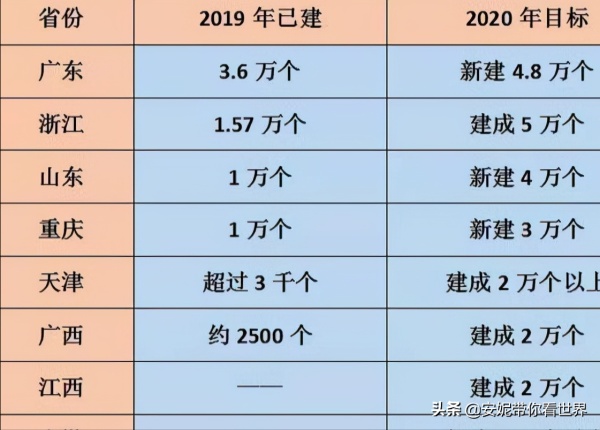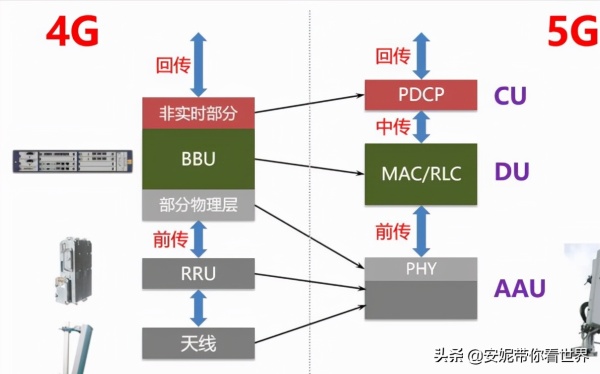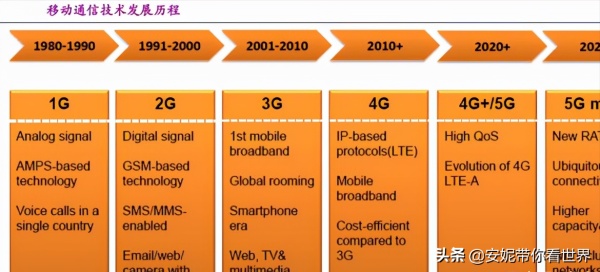my country's 5G has been commercialized, with leading technology and scale, but it is difficult to be fully popularized due to three problems

The most frequently heard topic in the past two years should
be 5G. In the era of artificial intelligence, the 5G industry has also ushered
in rapid development. According to the official "Economic Operation of the
Communications Industry in the First Quarter of 2021", as of the end of
March this year, the total number of domestic 5G base stations reached 819,000,
and 48,000 were newly built from January to March.
The most frequently heard topic in the past two years should
be 5G. In the era of artificial intelligence, the 5G industry has also ushered
in rapid development. According to the official "Economic Operation of the
Communications Industry in the First Quarter of 2021", as of the end of
March this year, the total number of domestic 5G base stations reached 819,000,
and 48,000 were newly built from January to March.

From this data, we can see how fast the domestic 5G industry
is developing. Of course, there are still some issues that need attention, such
as excessive investment, lack of unique applications, etc., which need to be
considered. For operators, the initial investment of 5G construction is not to
be underestimated. At the same time, it is necessary to control the unit price
of tariffs. Therefore, only by exploring new business models can the industry
be successfully applied.
Of course, in the past two years of my country's 5G
commercial use, 5G base stations that have been opened have covered all
prefecture-level cities and more than 95% of counties. Among them, the number
of 5G mobile phone terminal connections has exceeded 392 million. 5G has been
combined with high-tech such as artificial intelligence and big data, and new
models such as 5G + industrial Internet have been explored. There are over
10,000 domestic 5G application cases, covering areas including steel, mining, etc.
In terms of 5G technology, my country is already far ahead of other countries
in the world.

To a certain extent, my country has built a 5G network with
the world's leading technology, the largest scale and the largest number of
users. The global communication technology has developed so far, and has
experienced exponential jumps since its inception, and 5G standards have repeatedly
broken through. Including the requirements for system performance and user
experience, 5G technology has to move to a higher level.
Some people raised questions about this. Since 5G can be
subdivided into various fields, including small base stations, fiber optic
cables, optical modules, switch servers, antenna feeder systems, 5G modules,
base station radio frequencies, and equipment vendors’ 5G main equipment, 8
fields. Which of these segments is the most promising one?
5G master device
Generally speaking, the role played by each field is
different. Take the 5G main equipment as the core equipment of the 5G network.
Its existence can be said to be indispensable in the construction of 5G
infrastructure. At present, this market has been occupied by five major
equipment vendors, Huawei, ZTE, Ericsson, Nokia, and China Xinke. As the first
batch of equipment vendors to study 5G construction, Huawei's position in this
market cannot be underestimated.
Base station radio frequency
With the advent of the 5G era, wireless will no longer stop
at the connection between people and equipment, as well as the connection
between equipment and equipment, and base station radio frequency belongs to
such a highly integrated industry. Of course, there are not a few manufacturers
engaged in this field. As a global base station antenna head company, Tongyu
Communications will provide a series of advanced antenna feeders in the global
market for radio frequency devices and microwave antennas throughout the 5G
construction cycle. solution.

Small cell
Small base stations are also important in 5G construction.
In indoor scenes that cannot be covered by 5G macro stations, such as stations
and hotels, small base stations will supplement them in time. To a certain
extent, small base stations have become an indispensable part of 5G network
construction. And many domestic companies have begun to engage in the research
and development, manufacturing and sales of small base stations. On the whole,
the leaders in this field include Jingxin Communications, Huawei, ZTE, Ericsson
and China Xinke.
Among them, Jingxin Communications has won 5G small cell
commercial contracts in many provinces, and it still has the leading conditions
in this market. In fact, it can be seen from the above three fields that the
importance of any sub-field in the 5G era cannot be replaced. As for which of
the eight areas we mentioned above is more important, it is actually
indistinguishable from each other.
In any case, my country's performance in the 5G market is
commendable. Among them, Shenzhen alone has more 5G base stations than all of
Europe. Germany has only a few hundred 5G base stations in the entire country.
However, Shenzhen already has 46,000 5G base stations. The reason why my
country's 5G network can develop rapidly is related to the advanced
construction strategy. Of course, if you want to maintain this leading
position, the speed of 5G network construction needs to be further accelerated.

Relevant departments have made it clear that my country will
continue to increase the construction of 5G networks in 2021, and it is
expected that the number of new 5G base stations nationwide will exceed 600,000
by the end of 2021. Areas above the county level and some key townships will be
further covered. In any case, it is a good thing that 5G will usher in
all-round development, but there are some problems that must be paid attention
to if you want to really land. In fact, we have already said that the biggest
problem in the 5G field is capital, energy consumption and applications.
Not to mention 5G, the three major operators have invested
more than 900 billion yuan in 4G, and the costs have not been fully recovered
yet. It is roughly estimated that 260 billion has been invested in 5G, and it
is also unknown when it will be able to pay back. In addition, 2021 is the peak
of my country's 5G investment. For the three major operators who want to deploy
more markets, they will face the pressure of investment.

In addition to funding issues, energy consumption is also a
major problem. According to the data, the power consumption of 5G base stations
can reach 1.5 to 3 times that of 4G base stations, not to mention the overall
energy consumption due to the high construction density. Even if the power
consumption of base stations can be reduced through innovative hardware, the
implementation of these technologies will take time to study. In other words,
as long as the power consumption problem is not solved, the time for 5G to
become fully popular needs to be moved back.
The last point is the application. At present, 5G still
lacks some unique applications. Some institutions predict that the real problem
facing 5G in the future will no longer be technology, but no "heavyweight
applications." Although 5G has been valued by countries around the world,
it does not have a special application for the public like 4G. Without this
uniqueness, it is difficult to be fully popularized in the market.